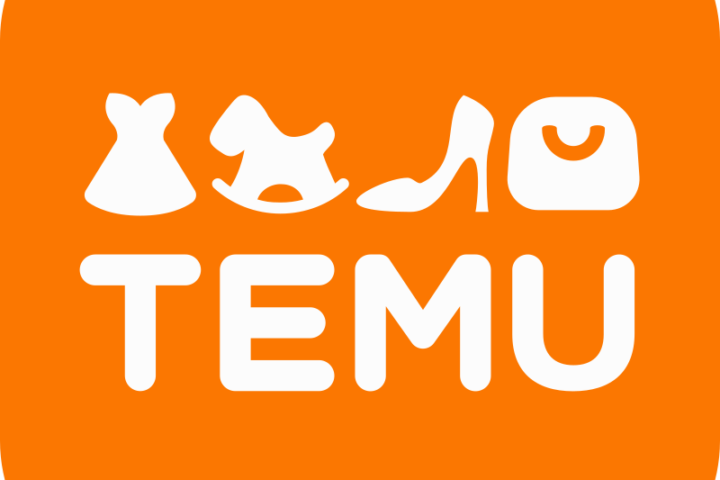Introduction to Irresistible Offers
In the competitive landscape of modern business, the ability to create an irresistible offer can be a defining factor for success. An irresistible offer is one that captures the attention of potential customers, compelling them to take immediate action. It goes beyond mere discounts or promotions, appealing directly to the needs and desires of the consumer.
Crafting such offers requires a deep understanding of your target audience and a strategic approach. An irresistible offer is not just about lowering prices or adding value; it is about presenting a proposition so compelling that it stands out in the marketplace. This involves a blend of psychological triggers, perceived value, and unique selling points that make the offer too good to pass up.
The importance of creating an irresistible offer cannot be overstated. In an era where consumers are bombarded with countless marketing messages daily, having a standout offer can significantly enhance your business’s visibility and appeal. It can convert prospects into loyal customers and drive repeat business, thereby boosting your revenue and brand reputation.
This blog post will delve into the ten critical elements that constitute an irresistible offer. Each element plays a crucial role in crafting a proposition that not only attracts but also retains customers. From understanding customer psychology to leveraging social proof, we will explore the multifaceted components that make an offer truly compelling.
As we navigate through these elements, keep in mind that the goal is to create a synergy between the offer and the customer’s perceived value. By the end of this discussion, you will be equipped with the knowledge to formulate offers that not only meet but exceed customer expectations, ensuring business growth and sustained success.
Element 1: Understand Your Target Audience
To create an irresistible offer, it is imperative to first understand your target audience thoroughly. This foundation is essential for crafting a proposal that truly resonates and compels action. Begin by conducting comprehensive research to gather insights about your audience. Utilize tools such as surveys, interviews, and social media analytics to collect data on demographics, behaviors, and preferences. Understanding who your audience is will enable you to tailor your offer to their specific needs and desires.
Identifying the pain points of your target audience is a crucial step in this process. Pain points are the specific problems or challenges that your audience faces. By empathizing with these issues, you can position your offer as a solution. For instance, if your audience struggles with time management, an offer highlighting efficiency and time-saving features will likely capture their interest. Conversely, if financial constraints are a significant concern, emphasizing cost-effectiveness and value can make your offer more appealing.
Beyond pain points, it’s equally vital to understand the desires and preferences of your target audience. What motivates them? What are their aspirations? This information can be gleaned from various sources, including customer feedback, market trends, and competitor analysis. By aligning your offer with the aspirations of your audience, you create a strong emotional connection that enhances the attractiveness of your proposal.
In essence, the process of creating an irresistible offer begins with a deep dive into understanding your target audience. The insights gained from this research will inform every aspect of your offer, from messaging to product features, ensuring it meets the specific needs and desires of those you aim to serve. A well-researched understanding of your audience not only increases the relevance of your offer but also significantly boosts its potential to convert prospects into loyal customers.
Element 2: Clear and Compelling Value Proposition
A clear and compelling value proposition is integral to creating an irresistible offer. At its core, a value proposition is a promise of value to be delivered, communicated, and acknowledged. It explains how your product or service solves a problem or improves a situation, delivers specific benefits, and tells the ideal customer why they should choose your offer over the competition. Crafting a well-defined value proposition involves understanding and articulating the unique benefits of your offer, making it compelling enough to capture the attention of your target audience.
The first step in developing a strong value proposition is to identify the primary benefits your product or service provides. These benefits should resonate deeply with your target audience and address their specific needs or pain points. To achieve this, start by conducting market research to understand the challenges and desires of your potential customers. Gather feedback through surveys, focus groups, and customer interviews to gain insights into what your audience values most.
Once you have a clear understanding of the benefits your offer provides, articulate these benefits in a concise and persuasive manner. Your value proposition should be easily understandable and should quickly convey the core value your offer delivers. Avoid jargon or overly technical language that might confuse or alienate your audience. Instead, use clear and straightforward language that highlights the unique selling points of your offer.
A compelling value proposition also differentiates your offer from competitors. Emphasize what makes your product or service unique and why customers should choose you over other options in the market. This could include aspects such as superior quality, innovative features, exceptional customer service, or exclusive benefits. The goal is to position your offer as the best solution available, making it an irresistible choice for your target audience.
Ultimately, a clear and compelling value proposition is essential for attracting and retaining customers. It serves as the foundation of your marketing strategy, guiding how you communicate the value of your offer and convincing potential customers to take action. By clearly articulating the unique benefits and differentiators of your product or service, you can create an irresistible offer that stands out in the marketplace.
Element 3: High-Value Content or Product
Ensuring that your offer delivers high value is paramount to creating an irresistible proposition. High-value content or products not only attract potential customers but also foster loyalty and trust. To enhance the value of your product or service, consider incorporating exclusive features that set your offer apart from the competition. These could be unique functionalities, advanced capabilities, or specialized attributes that cater specifically to the needs of your target audience.
Another effective strategy is to include bonuses or complementary items with your main offer. These added incentives can significantly boost perceived value. For instance, if you are selling an online course, you might include downloadable resources, access to a private community, or one-on-one coaching sessions as part of the package. Such bonuses not only enhance the immediate value but also provide ongoing benefits that keep customers engaged and satisfied.
Exceptional quality is another critical component in creating an irresistible offer. High-quality products or services often speak for themselves, reducing the need for aggressive marketing tactics. Investing in superior materials, innovative design, or outstanding customer service can significantly elevate your offer’s appeal. When customers perceive that they are getting exceptional quality, they are more likely to view the offer as a worthwhile investment.
Lastly, transparency and authenticity play a crucial role in delivering high value. Clearly communicate what customers can expect from your offer and ensure that it aligns with their expectations. Being honest about the benefits and limitations helps build credibility and trust, essential elements for a successful, irresistible offer. By focusing on these aspects, you can create an offer that not only meets the immediate needs of your customers but also exceeds their expectations, making it truly irresistible.
Element 4: Limited Availability or Scarcity
Limited availability or scarcity is a powerful psychological trigger that significantly enhances the attractiveness of an offer. When an item or service is perceived as scarce, it becomes more desirable. This principle stems from the basic economic theory of supply and demand: as the availability of a product decreases, its perceived value increases. Implementing scarcity effectively can thus create an irresistible offer that captures attention and drives action.
One effective tactic is the use of limited-time offers. By setting a deadline, you instill a sense of urgency, compelling potential customers to act quickly rather than procrastinate. For instance, online retailers often use countdown timers to illustrate the limited time remaining to purchase a product at a discounted price. This visual cue reinforces the urgency and can significantly boost conversion rates.
Another tactic is offering exclusive deals. Exclusivity appeals to the human desire for uniqueness and status. When an offer is available only to a select group, such as members of a loyalty program or subscribers to a newsletter, it feels more special and valuable. This approach not only incentivizes immediate action but also fosters a sense of belonging and loyalty among customers.
Limiting the quantity of a product can also create scarcity. Displaying messages like “Only 5 left in stock” can prompt immediate purchases to avoid missing out. This strategy is particularly effective for high-demand products or during peak shopping seasons. It leverages the fear of missing out (FOMO), a compelling motivator that can accelerate purchasing decisions.
Incorporating these tactics—limited-time offers, exclusive deals, and limited quantities—into your marketing strategy can significantly enhance the appeal of your offer. By creating a sense of urgency and exclusivity, you can drive quicker and more decisive purchasing behavior, ultimately leading to higher sales and customer satisfaction.
Element 5: Risk Reversal Tactics
Risk reversal tactics are essential in creating an irresistible offer because they address the inherent apprehensions that potential customers may have when considering a purchase. These tactics essentially shift the risk from the buyer to the seller, thereby reducing buyer hesitation and fostering a sense of security. By implementing strategies such as money-back guarantees, free trials, and warranties, businesses can significantly alleviate customer fears, thereby increasing trust and the likelihood of conversion.
Money-back guarantees are one of the most effective risk reversal tactics. They provide customers with the assurance that if the product or service does not meet their expectations, they can return it for a full refund. This strategy not only demonstrates confidence in the quality of the offering but also reassures the customer that their investment is protected, thereby making the decision to purchase less daunting.
Free trials serve a similar purpose by allowing potential customers to experience the product or service firsthand without any financial commitment. This tactic is particularly beneficial for digital products, software, and subscription-based services. By offering a free trial, businesses can showcase the value and benefits of their offer, encouraging customers to make a purchase once they have experienced its advantages.
Warranties also play a crucial role in reducing buyer hesitation. By offering a warranty, businesses assure customers that any defects or issues will be addressed within a specified period. This commitment to quality and customer satisfaction not only enhances trust but also signals the durability and reliability of the product.
Incorporating these risk reversal tactics into your offer can significantly mitigate customer concerns, thereby making your offer more compelling. By reducing perceived risk, you create an environment where potential buyers feel more confident and secure in their purchasing decisions, ultimately leading to increased sales and customer loyalty.
Element 6: Strong Call to Action (CTA)
A compelling call to action (CTA) is a cornerstone in the process of creating an irresistible offer. It acts as a pivotal bridge between interest and conversion, guiding potential customers towards taking the desired action. The efficacy of a strong CTA is rooted in its ability to eliminate ambiguity and present a clear, actionable step for the audience to follow.
An effective CTA must be action-oriented, using verbs that encourage immediate action. Phrases like “Sign Up Now,” “Get Your Free Trial,” or “Download Today” are prime examples of action-oriented language that can prompt users to engage without hesitation. The language should be direct and unambiguous, ensuring that the audience knows exactly what to do next.
Clarity is another critical component of a successful CTA. The message should be concise and straightforward, avoiding any potential confusion. A well-defined CTA eliminates guesswork, making it easier for potential customers to understand what they are committing to and why it benefits them. For instance, “Start Your Free 30-Day Trial” clearly communicates both the action and the value proposition.
The placement of the CTA is equally important. It should be strategically positioned where it’s most likely to be seen and acted upon. Ideally, it should appear above the fold on a webpage, ensuring it is visible without scrolling. Additionally, incorporating the CTA multiple times throughout the content can reinforce the desired action. For example, placing a CTA at the beginning, middle, and end of a blog post can capture readers at various stages of their engagement.
A strong CTA can significantly impact the response rate and overall effectiveness of an offer. By employing action-oriented language, maintaining clarity, and strategically placing the CTA, businesses can enhance their ability to convert potential customers into loyal clients. The art of creating an irresistible offer is incomplete without a powerful call to action that drives results.
Element 7: Social Proof and Testimonials
Social proof plays a pivotal role in enhancing the credibility of your offer. When potential customers see evidence that others have had positive experiences with your product or service, they are more likely to trust and engage with your offer. There are several forms of social proof that can be leveraged to build this trust, including customer testimonials, reviews, case studies, and endorsements.
Customer testimonials are personal accounts from satisfied users, providing firsthand insights into their experiences. These testimonials can be displayed prominently on your website, landing pages, or promotional materials to showcase genuine satisfaction. When crafting an irresistible offer, integrating authentic and relatable testimonials can significantly influence potential customers by demonstrating real-world benefits.
Online reviews are another powerful form of social proof. Platforms such as Google, Yelp, or industry-specific review sites provide a space for customers to leave their feedback. Highlighting positive reviews can serve as an endorsement of your offer’s value. It is essential to monitor and respond to these reviews, as engaging with customers shows your commitment to their satisfaction and enhances your credibility.
Case studies offer a more detailed examination of how your product or service has successfully addressed specific problems for your clients. By presenting these success stories, you provide potential customers with tangible evidence of your offer’s effectiveness. A well-structured case study includes the problem faced by the customer, the solution provided by your offer, and the positive outcome achieved, thus creating a compelling narrative that resonates with prospective buyers.
Endorsements from industry experts or influencers can also bolster the attractiveness of your offer. These endorsements act as a vote of confidence from respected figures within your field, lending additional credibility and persuading potential customers to take action. Including quotes, video endorsements, or social media shout-outs can effectively amplify the perceived value of your offer.
Incorporating these various forms of social proof into your marketing strategy not only builds trust but also persuades potential customers by demonstrating that your offer has consistently met the needs and exceeded the expectations of others.
Element 8: Clear and Transparent Pricing
One of the foundational elements of creating an irresistible offer is ensuring that your pricing is clear and transparent. This transparency is crucial in fostering trust and credibility with your potential customers. When pricing is straightforward and devoid of hidden fees or complex structures, it significantly enhances the customer experience, making them more likely to follow through with a purchase.
Presenting your pricing in a straightforward manner involves clearly listing the costs associated with your products or services. This means breaking down the total price to show all components, such as the base price, taxes, shipping fees, and any additional charges. By doing so, you eliminate any surprises at the checkout stage, which is a common cause of cart abandonment.
The benefits of including all costs upfront cannot be overstated. Customers appreciate honesty and clarity, and when they see that your pricing is transparent, it increases their confidence in your brand. This confidence can lead to higher conversion rates and repeat business, as customers are more likely to return to a business they trust.
Moreover, transparent pricing can differentiate you from competitors who might use hidden fees to lure customers with seemingly lower prices. By being upfront about all costs, you position your offer as more credible and customer-friendly. This approach not only enhances your reputation but also builds long-term customer loyalty.
In conclusion, clear and transparent pricing is a critical component of an irresistible offer. It ensures that customers know exactly what they are paying for, thereby reducing the likelihood of cart abandonment and increasing overall customer satisfaction. By prioritizing transparency, you can build trust with your customers and create a more appealing and competitive offer.



